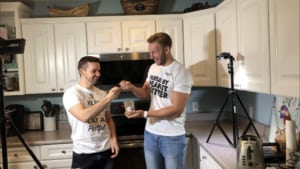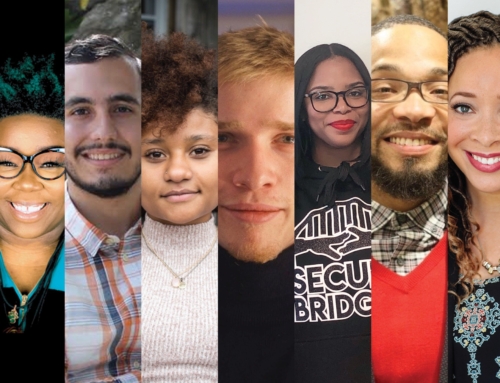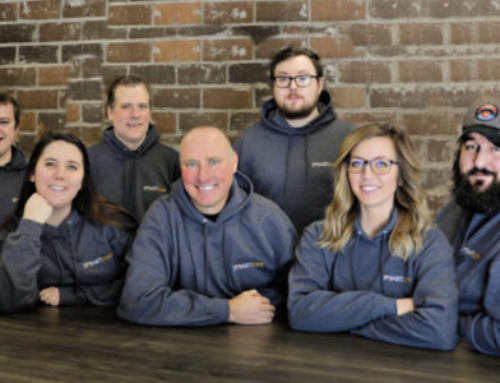Curious to know more about the product that claims to be the world’s healthiest peanut butter? We were too, so we asked Pintful Peanut Butter co-founder Evan Laird to explain how he decided to take a staple of nearly every home and rework the formula. The process added protein, reduced sugar and used all-natural ingredients to create an amazing peanut butter that tastes great, packs a solid nutritional punch and takes it easy on the environment.
 How would you describe Pintful, and how did it come about?
How would you describe Pintful, and how did it come about?
Pintful is the world’s healthiest peanut butter, and yes, we can legally claim that! It started with my obsession for peanut butter and my newfound love for natural foods and eating healthy. So one day, in my mother’s kitchen, I started making my own peanut butter. I created a recipe so perfect and so much better for you than anything out there that I couldn’t not share it with everyone I knew!
There are a lot of peanut butter brands out there. How is yours different?
Pintful is the only high-protein peanut butter that has no added sugars, preservatives, oils or artificial ingredients. So not only does it pack 50 percent more protein, it’s all plant-based and sustainably sourced ingredients.
How do you plan to market and capitalize on that difference?
We market and sell mostly to fitness and health enthusiasts. These individuals are willing to pay our higher price for a higher-quality, premium product. We are currently capitalizing by launching on Amazon to lower shipping costs and lead times for our customers.
Where are you in terms of product development and launch?
We have been fully launched since June. We pre-launched on Kickstarter and, after raising more than $10,000 in pre-orders by May, we got right to work and scaled our peanut butter-making abilities to a full commercial-grade kitchen. We can make more than 70 jars per hour! We are now available on pintfulpeanutbutter.com and Amazon.
How will you scale up in terms of new products, if any, as well as manufacturing, shipping and other elements of business growth?
Our next big step is scale. We would like to work with a co-manufacturer to use their machines, process and supplier relations to dramatically lower our costs. This will not only lower our direct product costs by 30 to 50 percent, but also allow us to hit a more desirable price point for our end customer.
How was being in Wisconsin helpful to you in the beginning, and what role does your location play in your growth plans?
Wisconsin and its entrepreneurial scene have really been crucial. More than $2,000 of our original funding has come through business-plan competitions put on by the universities here, as well as the small, personal feel of Wisconsin. Everyone’s willing to go the extra mile to help in our community and wants to see us succeed. You can see that firsthand in our features in the Journal Sentinel and OnMilwaukee.
What advice do you have for someone who has a passion and is figuring out how, or if, they can build a business around it?
Always go for it. Worst comes to worst, you’re back where you are now. So take the leap of faith, test your assumptions — so you never have to live with the what-ifs or regrets. Take the first step today, whatever that might be, and I can guarantee if it’s something you truly love, the snowball effect will keep making your impact and business bigger and better.









FOLLOW US